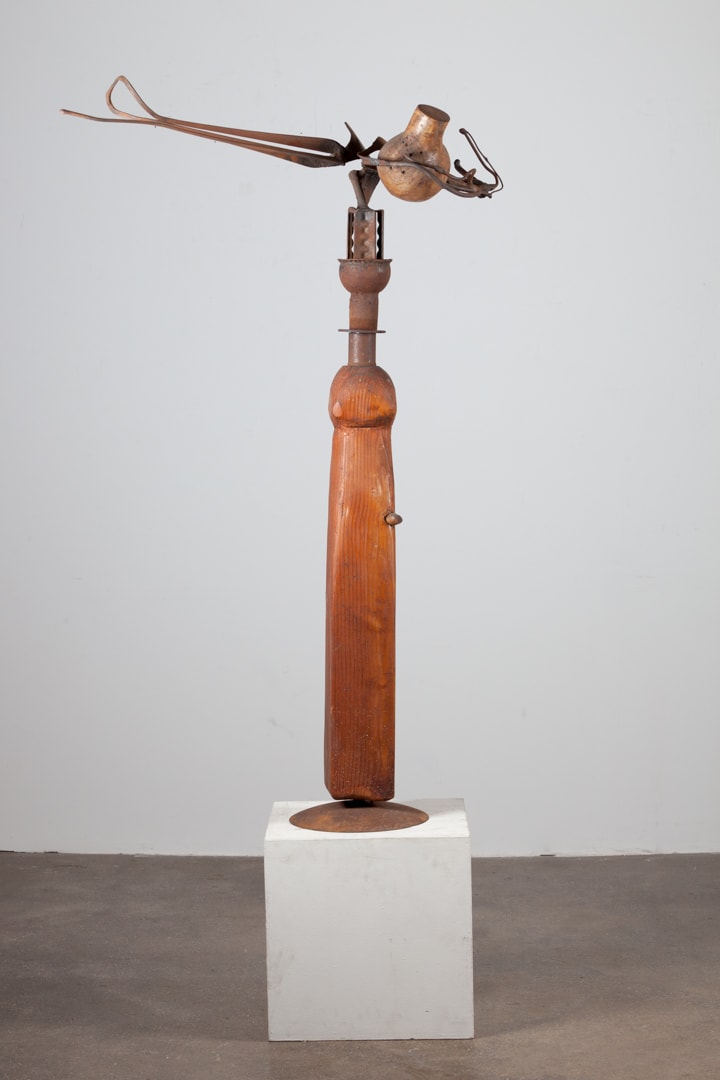Richard Hunt USA, b. 1935
149.9 x 108 x 41.9 cm
Further images
By the time Hunt graduated from SAIC in 1957, his work had already been exhibited by MoMA, a testament to his strikingly personal language of lyrical abstraction, mature beyond his years. Though he was comfortable working with a range of materials, including found objects, wood and steel, a fellowship that allowed him to travel through reconstructed Europe in 1958 convinced him that metal epitomized the spirit of the Modern World. From that point forward, metal has been his sole medium. A small number of early works that incorporate both metal and wood still exist. This untitled work from 1957 is one of those rare examples.
Artist Background
Richard Hunt (b. 1935, USA) is one of the most accomplished American metal sculptors of the past century. His work has been exhibited 12 times at the Museum of Modern Art in New York, including a solo retrospective in 1971, when the artist was only 35 years old. Titled The Sculpture of Richard Hunt, March 25–July 9, 1971, this was only the third solo exhibition for a black artist in the history of MoMA. (The first was Sculpture by William Edmondson, October 20–December 1, 1937, and the second was Paintings by Jacob Lawrence, October 10–November 5, 1944.)
Today, Hunt's works are in the collections of the most prestigious museums in the United States, including MoMA, the Whitney, the Smithsonian American Art Museum, the National Gallery of Art, the Museum of Contemporary Art Chicago, and dozens of others. In the realm of large-scale works, Hunt has established himself as very possibly the most productive public sculptor in the United States. His more than 125 public sculptures grace everything from the grassy sweeps of idyllic public parks to the imposing facades of steel and glass skyscrapers. He has been commissioned by corporations, hospitals, museums, municipalities, universities and athletic organizations. One of his proudest recent accomplishments is the welded bronze sculpture “Swing Low” (2016), which hangs in the lobby of the National Museum of African American History and Culture in Washington, DC, the newest Smithsonian institution.









